Paul Rodden • Season: 2025 • Episode: 404
Listen Now:
>Direct Link To The Hydrogen Podcast MP3<
Listen On Your Favorite App:
Welcome to The Hydrogen Podcast!
In this episode of The Hydrogen Podcast, we break down three massive hydrogen breakthroughs from around the world:
 1. Bosch Unveils Hydrogen Tech at Hannover Messe 2025
1. Bosch Unveils Hydrogen Tech at Hannover Messe 2025
 Hybrion PEM electrolyzers producing 552 tons/year
Hybrion PEM electrolyzers producing 552 tons/year
 CryoPump for 10-minute truck refueling & 70% fuel savings
CryoPump for 10-minute truck refueling & 70% fuel savings
 $5B revenue target by 2030 – Bosch goes all-in on hydrogen
$5B revenue target by 2030 – Bosch goes all-in on hydrogen
 Efficiency: 80-85%, 30-bar operation, ultrapure water systems
Efficiency: 80-85%, 30-bar operation, ultrapure water systems
 2. Texas Builds World’s Largest Green-Powered Data Center
2. Texas Builds World’s Largest Green-Powered Data Center
 10 GW campus by Switch & Dell – fully powered by renewables + green hydrogen
10 GW campus by Switch & Dell – fully powered by renewables + green hydrogen
 2 GW electrolysis producing 350,000+ tons H2/year
2 GW electrolysis producing 350,000+ tons H2/year
 $50B project cost, $26B/year in revenue, 20% IRR
$50B project cost, $26B/year in revenue, 20% IRR
 Hydrogen storage in salt caverns, powering backup with 7 TWh/year
Hydrogen storage in salt caverns, powering backup with 7 TWh/year
 3. France Discovers $92 Billion Natural Hydrogen Reserve
3. France Discovers $92 Billion Natural Hydrogen Reserve
 250 million tons of white hydrogen in Lorraine
250 million tons of white hydrogen in Lorraine
 5–20 million tons/year extraction potential
5–20 million tons/year extraction potential
 $60B in annual revenue at $3/kg with $0.50–$1/kg production cost
$60B in annual revenue at $3/kg with $0.50–$1/kg production cost
 Game-changer for Europe’s clean energy future & hydrogen exports
These stories highlight hydrogen’s growing role across industrial tech, AI infrastructure, and clean energy leadership.
Game-changer for Europe’s clean energy future & hydrogen exports
These stories highlight hydrogen’s growing role across industrial tech, AI infrastructure, and clean energy leadership.
 Stay tuned for detailed efficiency metrics, financials, CO2 savings, and job creation tied to each development.
Stay tuned for detailed efficiency metrics, financials, CO2 savings, and job creation tied to each development.
 Feedback? Questions? Contact us: info@thehydrogenpodcast.com
Feedback? Questions? Contact us: info@thehydrogenpodcast.com
 Subscribe for weekly insights and industry deep dives!
#Hydrogen #GreenHydrogen #WhiteHydrogen #Electrolysis #DataCenters #Bosch #TexasHydrogen #FranceHydrogen #NaturalHydrogen #HannoverMesse #CryoPump #FuelCells #EnergyStorage #AIInfrastructure #HydrogenPodcast #CleanTech #H2Revolution
Subscribe for weekly insights and industry deep dives!
#Hydrogen #GreenHydrogen #WhiteHydrogen #Electrolysis #DataCenters #Bosch #TexasHydrogen #FranceHydrogen #NaturalHydrogen #HannoverMesse #CryoPump #FuelCells #EnergyStorage #AIInfrastructure #HydrogenPodcast #CleanTech #H2Revolution
Thank you for listening and I hope you enjoy the podcast. Please feel free to email me at info@thehydrogenpodcast.com with any questions. Also, if you wouldn’t mind subscribing to my podcast using your preferred platform… I would greatly appreciate it.
Respectfully,
Paul Rodden
VISIT THE HYDROGEN PODCAST WEBSITE
https://thehydrogenpodcast.com
CHECK OUT OUR BLOG
https://thehydrogenpodcast.com/blog/
WANT TO SPONSOR THE PODCAST?
Send us an email to: info@thehydrogenpodcast.com
NEW TO HYDROGEN AND NEED A QUICK INTRODUCTION?
Start Here: The 6 Main Colors of Hydrogen
Transcript:
Today, I’m going to look at three groundbreaking developments in hydrogen technology and resources. I’ll begin with Bosch’s advancements in hydrogen production, showcased at Hannover Messe 2025, as reported by Bosch Media Service, highlighting innovations in electrolysis and refueling infrastructure. Next, an MSN article details Texas’s emergence as a hub for the world’s largest green-powered data center, leveraging hydrogen to meet its energy demands. Finally, another MSN report examines France’s discovery of the world’s largest natural hydrogen reserve, valued at $92 billion, positioning the country as a potential leader in clean energy. All of this on todays Hydrogen Podcast
The first segment focuses on a report from Bosch Media Service, published March 26, 2025: Hannover Messe 2025 – Bosch embraces hydrogen production. At Hannover Messe, held from March 31 to April 4, 2025, Bosch unveiled its advancements in hydrogen production and utilization, targeting decarbonization across industries such as chemicals, transportation, steel, and energy. With a projected global electrolysis capacity of 100–170 gigawatts by 2030, Bosch is positioning itself as a key player in this strategic growth field, despite a noted slowdown in the hydrogen economy’s ramp-up.
Bosch’s history in energy innovation spans decades, with expertise in sensor technology, software, and connectivity, now applied to hydrogen solutions. At Hannover Messe, the company premiered its Hybrion PEM (proton exchange membrane) electrolysis stacks, integrated into a 2.5-megawatt modular container system supplied by FEST in Goslar, Germany. Each stack, manufactured at Bosch’s Bamberg site, comprises over 100 electrolysis cells, producing 23 kg of hydrogen per hour at 1.25 MW, or 46 kg/hour for the 2.5-MW system—552 tons annually at 80% capacity. Operating at 30 bar pressure, the stacks use 50-55 kWh per kg, achieving 80-85% efficiency, with water consumption at 10 liters/kg (5,520 liters/day for 2.5 MW). The system requires ultrapure water, supplied by Bosch’s Pure Water System, which employs mechanical vapor compression and electrodeionization to remove impurities like salts and metals, using no chemicals and saving 20% water versus traditional methods.
Bosch also advances hydrogen utilization. In partnership with FirstElement Fuel, a U.S. leader in liquid hydrogen refueling, Bosch Rexroth developed CryoPump stations, compressing liquid hydrogen to 875 bar, enabling heavy trucks to refuel 100 kg in 10 minutes—equivalent to a 1,000-mile range at 1 kg/10 miles. This cuts operating costs by 70%, from $15/kg to $4.50/kg, by eliminating intermediate storage. The CryoPump’s servo-hydraulic drives (10-280 kW) achieve 95% compression efficiency, reducing energy use to 2 kWh/kg versus 3 kWh/kg for gaseous compression. Bosch’s broader portfolio includes fuel cells and hydrogen engines, with sales targets of 5 billion euros by 2030, per a 2024 statement.
Economically, a 2.5-MW system costs $2.5-$3 million with electrolyzers at $800/kW, water treatment at $200,000-$300,000, and balance-of-plant at $500,000. At $3/kg, 552 tons yields $1.66 million annually; costs net $0-$160,000 profit without subsidies. Europe’s 40% capex credit reduces costs to $1.5-$1.8 million, boosting IRR to 10-15%. Scaling to 20 MW—$20 million investment—produces 4,416 tons making $13.25 million revenue, with $1 million profit or a 20% IRR. Jobs include 50-100 per 2.5-MW system, scaling to 1,000 for 50 MW, adding $50-$100 million to local economies. The global electrolyzer market, $5 billion in 2025, is projected at $23 billion by 2030 according to MarketsandMarkets, with Bosch targeting 5-10%.
This initiative supports decarbonization by replacing hydrocarbons, with green hydrogen cutting 10 kg CO2e/kg versus gray hydrogen. Challenges include high capex and renewable energy costs (5-7 cents/kWh), but Bosch’s industrial scale and 470 subsidiaries across 60 countries position it to drive hydrogen adoption globally.
The second segment examines an MSN article from March 28, 2025: Texas to become hub for world’s largest green-powered data center. In West Texas, Switch and Dell Technologies are developing a 10-gigawatt data center campus, the largest globally, powered entirely by renewable energy and green hydrogen. This project, spanning 100,000 acres, aims to meet the soaring energy demands of AI and cloud computing, projected to double data center consumption to 300 terawatt-hours by 2030, per the IEA.
Texas, with 30 GW of wind and 20 GW of solar capacity (EIA, 2024), is an ideal location, leveraging 5 GW of dedicated wind and solar for the campus. The data center’s 10 GW capacity—equivalent to 10 nuclear reactors—requires 87,600 GWh annually at 100% load, though typical 60% utilization reduces this to 52,560 GWh. Green hydrogen, produced via 2 GW of PEM electrolysis, supplements renewables during low generation periods. At 50 kWh/kg, 2 GW produces 40,000 kg/hour (960 tons/day, 350,400 tons/year), consuming 48 GWh/day and 17,520 GWh/year—33% of the campus’s needs. Water use is 10 liters/kg (9.6 million liters/day), sourced from desalinated groundwater. Hydrogen is stored in salt caverns—500 tons per $20 million cavern, per DOE—totaling 700,000 tons capacity ($2.8 billion). Fuel cells (60% efficiency) convert hydrogen back to electricity at 20 kWh/kg, delivering 7,008 GWh/year.
Economically, the campus costs $50 billion—$5,000/kW for 10 GW, including $20 billion for data centers, $10 billion for renewables, $4 billion for electrolyzers ($2,000/kW), $2.8 billion for storage, and $13.2 billion for infrastructure. Hydrogen production costs $2-$3/kg with 5-cent/kWh power. At $0.10/kWh grid equivalent, hydrogen power saves $200 million/year versus grid electricity. Operational revenue, assuming $0.50/kWh for AI workloads, is $26.3 billion/year; costs yield $20.8 billion profit (20% IRR). Jobs include 5,000 construction and 2,000 operational roles, adding $1 billion to Texas’s $2 trillion GDP. The global data center market, $300 billion in 2025, grows to $500 billion by 2030 (McKinsey), with green data centers at 20% ($100 billion).
This project decarbonizes data centers, cutting 50 million tons of CO2 annually (10 kg CO2e/kg H2 versus gray hydrogen). It also positions Texas as a hydrogen hub, potentially supplying 100,000 tons/year to transport ($300 million at $3/kg). Challenges include water scarcity—desalination costs $0.50/1,000 gallons—and electrolyzer durability (80,000 hours), but Texas’s 50 GW renewable base and $10 billion in clean energy incentives (e.g., IRA 45V credit, $3/kg) ensure viability.
The third segment analyzes an MSN report from March 28, 2025: France strikes hydrogen gold – world’s largest hydrogen reserve worth $92 billion could make it a global leader in clean energy revolution. In the Lorraine region, researchers from the University of Lorraine and CNRS discovered a 250-million-ton natural hydrogen deposit—the largest known globally—trapped in coal seams at depths of 1,000-3,000 meters. Valued at $92 billion at $0.37/kg (geological cost), this white hydrogen offers a low-carbon alternative to gray hydrogen from hydrocarbons.
Natural hydrogen, formed via serpentinization (water reacting with iron-rich rocks), emits 0.4 kg CO2e/kg during extraction, versus 10 kg for gray hydrogen, per IEA. The deposit, at 1,000-3,000 meters, requires drilling (1-2 wells/km², $5 million/well) to extract 5 million tons/year initially, scaling to 20 million tons/year by 2035. At 1,000 meters, pressure is 100 bar, allowing direct extraction; at 3,000 meters, 300 bar requires compression to 700 bar (10 kWh/kg, $0.50/kg) for transport. Pipelines (1,000 km, $1 million/km) distribute 10,000 tons/day, while salt caverns store 500 tons each ($20 million/cavern), totaling 5 million tons capacity ($2 billion). Purity is 90-95%, needing filtration (5% cost, $0.02/kg) to reach 99.99% for fuel cells.
Economically, extraction costs are $0.50-$1/kg—$0.37/kg geological, $0.10/kg drilling, $0.03/kg compression, per IRENA. At 5 million tons/year, revenue is $2.5-$5 billion at $0.50-$1/kg; scaling to 20 million tons yields $10-$20 billion. Infrastructure costs $10 billion—$5 billion drilling (1,000 wells), $1 billion pipelines, $2 billion storage, $2 billion processing. At $3/kg market price, 20 million tons generate $60 billion/year, with $40-$50 billion profit (25% IRR). Jobs include 10,000 for extraction and 5,000 for infrastructure, adding $1 billion to France’s $3 trillion GDP. The global hydrogen market, $150 billion in 2025, reaches $500 billion by 2030 (McKinsey), with white hydrogen at 10% ($50 billion).
This discovery positions France as a hydrogen leader, cutting 200 million tons of CO2 annually (20 million tons at 10 kg CO2e/kg). Exports to Germany and Spain—needing 5 million tons/year—could add $15 billion annually. Challenges include seismic risks and regulatory frameworks, but France’s 50 GW renewable base and $10 billion hydrogen plan (2030 Strategy) enhance feasibility, potentially reducing Europe’s reliance on imported hydrogen.
Alright, that’s it for me, everyone. If you have a second, I would really appreciate it if you could leave a good review on whatever platform you listen to. Apple podcasts, Spotify, Google, YouTube, etc. That would be a tremendous help to the show. And as always if you ever have any feedback, you are welcome to email me directly at info@thehydrogepodcast.com. So until next time, keep your eyes up and honor one another.






















